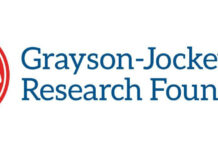
“For an adult horse with moderate activity, feed .75 to 1.0 lbs per 100 lbs of body weight.” These are the feeding instructions for a popular commercially fortified feed. If your horse weighs 1100 lbs (500 kg), you’ll need to feed 8.25 to 11 lbs of feed per day. For enough calories? Enough protein? Enough vitamins and minerals? Yes, to all of the above and more. That’s a lot of feed! That could amount to three to five two-quart scoops (depending on the weight of the feed) per day. And you’ll need to divide it into multiple feedings since meal size should never exceed 4 lbs (your horse’s stomach is small compared to the rest of his digestive tract).
Other nutrients provided to offer enough fat and protein may need to be supplemented when less than recommended amounts are fed; these might include omega 3 fatty acids, vitamins A and D, minerals such as copper and zinc, and a host of feedstuffs. As you can imagine, it becomes very tricky to figure out just how much to supplement. You could simply give half the supplement dosage if you are feeding half the fortified feed dosage. But to do this accurately, you should figure out how much your horse would have gotten if fed the recommended amounts, and then calculate how much supplement to feed to make up the difference. If you’re not comfortable with crunching numbers, your best source of information would be a qualified equine nutritionist.
Bottom line to “supplement the supplement”: Pay attention to labels, weigh your feed using a scale, not a scoop, and keep your calculator handy.
Further Reading
Vitamins for Horses
Dr. Juliet Getty is an internationally respected equine nutritionist available for private consultations and speaking engagements. At www.gettyequinenutrition.com, sign up for her informative—and free—monthly newsletter, Forage for Thought, read articles, join her nutrition forum, enroll in upcoming teleseminars, buy gift certificates, and purchase previously recorded events.







interesting
I like the line, “supplement the supplement.”
p